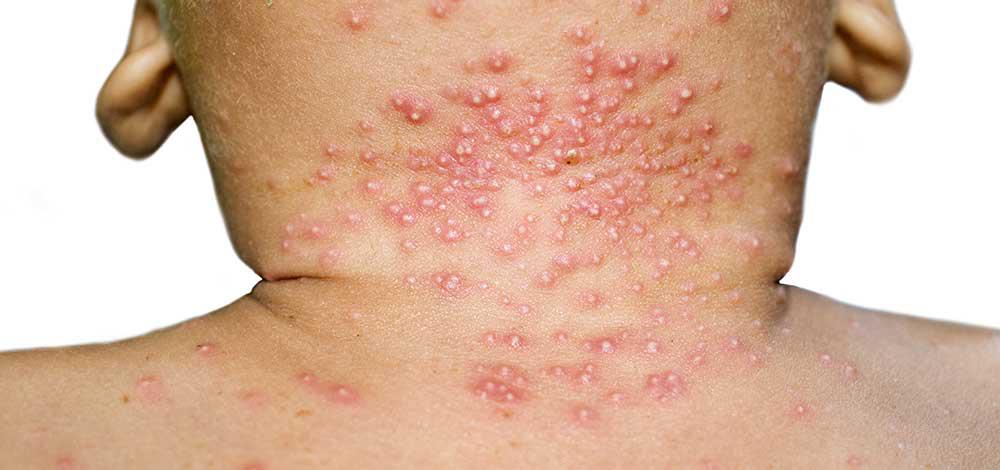Is it a Cold Sore or Impetigo? Your Guide to Symptoms and Treatments
Hey there, Super Moms and Dads! Are you dealing with the tricky task of figuring out if your little one has a cold sore or impetigo? Look no further! This is your go-to guide for understanding the differences, managing symptoms, and keeping your kiddos comfortable and healthy. Both conditions are common among children, but they require distinct approaches to treatment and care. So let’s dive right in and become an expert on these skin concerns!
What Are Cold Sores?
First up, cold sores, otherwise known as fever blisters. Caused by the herpes simplex virus (HSV), these pesky blisters pop up typically around the mouth and lips. They begin with a tingle, followed by cluster of tiny, painful sores filled with fluid. While they sound intimidating, cold sores are actually quite common and many people are exposed to the virus during their childhood.
Signs and Symptoms of Cold Sores in Children
- Tingling sensation or itchiness around the mouth before the sores appear
- Clusters of small, fluid-filled blisters on the lips, mouth or nose area
- Blisters burst and crust over, forming a scab that eventually heals
- Mild to moderate pain at the sore site
- Possible mild fever or swollen lymph nodes during initial outbreak
Understanding Impetigo
Moving on to impetigo. This is a skin infection caused by bacteria, usually Staphylococcus aureus and sometimes Streptococcus pyogenes. It’s highly contagious and thrives in warm and humid conditions, making playgrounds a common site of transmission among children. The infection can start at any cut or injury, or even on healthy skin.
Impetigo Symptoms to Watch For
- Red sores or blisters that quickly rupture, ooze for a few days, then form a honey-colored crust
- Itching and soreness
- Rash that may begin as tiny blisters, then develops into a larger patch of oozing, yellow-crusted skin
- Swollen lymph nodes in severe cases
How Can You Tell the Difference?
Pinpointing whether your child has a cold sore or impetigo can be a bit of a challenge, but there are key differences. Cold sores typically appear around the mouth and are preceded by a tingling feeling, while impetigo can occur on any part of the body and starts as red sores without prior itchiness or tingling. Focus on the location and the onset of symptoms for the best clue.
Treatment and Care for Cold Sores
While there’s no cure for cold sores since they’re caused by a virus that remains in the body, there are ways to manage the outbreaks:
- Antiviral Medications: These can help reduce the severity and duration of an outbreak if used early.
- Topical Creams: Over-the-counter topical treatments can provide symptom relief.
- Home Remedies: Cold compresses and pain relievers like ibuprofen or acetaminophen can help soothe discomfort.
Impetigo Management and Healing
Impetigo, on the other hand, requires antibiotic treatment to address the bacterial infection:
- Topical Antibiotics: For mild cases, antibiotic ointment can be applied to the affected area.
- Oral Antibiotics: More severe or widespread cases may need oral antibiotics prescribed by your doctor.
- Hygiene: Keeping the skin clean and covering the affected area can help prevent the spread of infection.
Parents, don’t worry; we’ve got this! Whether it’s a cold sore or impetigo, there are clear steps that can be taken to minimize discomfort and promote healing. Remember to consult your pediatrician for a proper diagnosis and treatment plan. Stay tuned as we head into more preventative measures to ensure your little adventurers stay healthy and happy!

5 Things Parents Should Know in Preparing for Cold Sores or Impetigo
When it comes to protecting your little ones from skin infections like cold sores and impetigo, knowledge is power! Understanding what to look out for and how to respond can make all the difference in managing these conditions. Here’s what every parent should keep in their toolkit:
1. Early Detection Is Key
Keep an eye out for the early signs of these conditions. For cold sores, it’s the tell-tale tingle around the mouth, while with impetigo, be observant of any red sores or irritation, especially after a day of fun in the sun. Early detection leads to prompt treatment, which can help to reduce the spread and severity.
2. Maintain Good Hygiene Practices
Encourage frequent handwashing and bathing, particularly after playtime or coming into contact with other children. Good hygiene is crucial for preventing the spread of impetigo, which is highly contagious. To prevent cold sore transmission, utensils, cups, and towels should not be shared.
3. Understand How to Manage an Outbreak
Hugs and kisses are a natural part of family life, but if someone in the family has a cold sore, it’s best to avoid skin-to-skin contact until the lesion has healed. For impetigo, cover the affected areas with gauze and tape to prevent your child from scratching and spreading bacteria.
4. Talk to Your Child’s School or Daycare
Communication with caregivers is important. Make sure to inform them if your child has been diagnosed with cold sores or impetigo, so they can take precautions to protect other children.
5. Stress the Importance of Not Touching
Teach your child the importance of not touching or scratching the affected area, whether it’s a cold sore or an impetigo lesion. Picking at sores can delay healing and increase the risk of spreading the infection.
With these tips, you’re well on your way to confidently handling these common childhood skin issues. Let’s move on to prevention strategies and lifestyle tips that can help keep these outbreaks at bay!
Preventive Measures to Keep in Mind
- Avoid Sharing Personal Items: Instruct your child not to share personal items such as towels, lip balm, or face cloths.
- Healthy Diet and Rest: A healthy immune system can ward off the herpes simplex virus more effectively. Ensure your child is well-rested and eating a balanced diet rich in vitamins and minerals.
- Sun Protection: Sun exposure can trigger cold sores, so using lip balm with SPF and applying sunscreen can create a helpful barrier.
- Avoid Contact with Infected Individuals: If you know a family member or friend has an active outbreak, it’s wise to temporarily limit direct contact.
- Regular Cleaning of Toys and Surfaces: Keep your child’s play areas clean to avoid the spread of bacteria that can lead to impetigo.
Every child gets the occasional scrape or bug bite, but with an eye on prevention and treatment, you’ll be equipped to keep cold sores and impetigo at bay. The best defense is to maintain a healthy and informed home where your kids know you’ve got their back – and their skin covered too!
Raising healthy children takes a village, and it certainly helps to be prepared. By being aware of the signs and symptoms, as well as having a plan for treatment and prevention, you’re ensuring your little ones stay safe and enjoy their adventures with the best health possible. Keep up the great work, parents – your care and attention make all the difference!
See more great Things to Do with Kids in New Zealand here. For more information see here
Disclaimer
The articles available via our website provide general information only and we strongly urge readers to exercise caution and conduct their own thorough research and fact-checking. The information presented should not be taken as absolute truth, and, to the maximum extent permitted by law, we will not be held liable for any inaccuracies or errors in the content. It is essential for individuals to independently verify and validate the information before making any decisions or taking any actions based on the articles.




